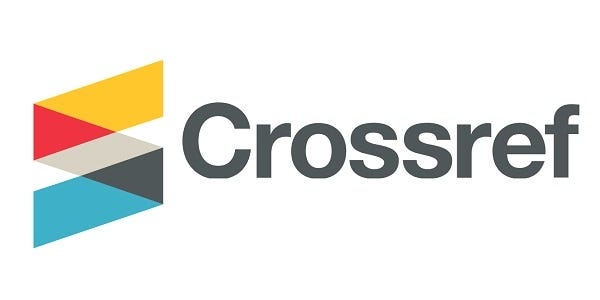Desain Kendali Kecepatan Motor DC Pada Mobile Robot Mecanum Wheels
 Abstract views: 26
,
Abstract views: 26
,
 pdf downloads: 27
pdf downloads: 27
Abstract
In an era of rapid technological development, the challenges facing the industrial sector in terms of automation continue to increase. Robotics is now present as one of the solutions and continues to be the focus of various studies. Mobile robots, with different numbers and types of wheels, are one of the types that are being widely researched to meet automation needs. One innovation that is attracting attention is the use of mecanum wheels, which provide omnidirectional motion capabilities that are far superior to conventional wheels. This research develops a control system for the DC motor used in the mecanum wheel mobile robot. This control design aims to provide precision in controlling the speed and direction of the robot's motion. By applying the PID (Proportional-Integral-Derivative) control technique, the system is able to optimally regulate the speed of each DC motor on all four wheels, allowing the robot to move smoothly in all directions. This research produces a PID controlled DC motor with a rise time of less than 15 seconds and PID parameters of Kp = 10, Ki = 0.5 and Kd = 2. The generated parameters can be used to control the speed of DC motors on mobile robots with mecanum wheels.
References
[2] B. Chu, “Performance evaluation of Mecanum wheeled omni-directional mobile robot,” 31st Int. Symp. Autom. Robot. Constr. Mining, ISARC 2014 - Proc., no. Isarc, pp. 784–789, 2014, doi: 10.22260/isarc2014/0106.
[3] J. Qian, B. Zi, D. Wang, Y. Ma, and D. Zhang, “The design and development of an Omni-Directional mobile robot oriented to an intelligent manufacturing system,” Sensors (Switzerland), vol. 17, no. 9, 2017, doi: 10.3390/s17092073.
[4] A. R. Hakim, Sumardi, and M. A. Riyadi, “Kontrol Posisi Pada Sistem Pergerakan Mobile Robot Roda Mekanum Menggunakan Kontrol Pid Berbasis Invers Kinematic,” Transient, vol. 4, no. 3, pp. 463–470, 2015.
[5] Muliady and G. Arisandy, “IMPLEMENTASI SISTEM GERAK HOLONOMIC PADA ROBOT KRSBI BERODA 2017 IMPLEMENTATION OF HOLONOMIC MOTION IN INDONESIAN SOCCER WHEELED ROBOT CONTEST 2017 Pada Kontes Robot Indonesia 2017 divisi Kontes Robot Sepak Bola Indonesia,” J. Tek. dan Ilmu Komput., vol. 7, no. 25, pp. 9–25, 2017.
[6] F. Fahmizal, A. Priyatmoko, and A. Mayub, “Implementasi Kinematika Trajectory Lingkaran pada Robot Roda Mecanum,” J. List. Instrumentasi dan Elektron. Terap., vol. 3, no. 1, pp. 25–30, 2022, doi: 10.22146/juliet.v3i1.74760.
[7] T. H. Prasetyo, I. Siradjuddin, and S. Sungkono, “Sistem Kendali Wall Following Pada Mobile Robot Dengan Penggerak Mekanum Menggunakan Metode Fuzzy,” J. Elektron. dan Otomasi Ind., vol. 8, no. 3, p. 214, 2021, doi: 10.33795/elk.v8i3.268.
[8] B. Joshi, R. Shrestha, and R. Chaudhary, “Modeling , Simulation and Implementation of Brushed DC Motor Speed Control Using Optical Incremental Encoder Feedback DC Motor Model Simulink Modeling , Simulation and Parameter estimation,” Proceeding IOE Grad. Conf., no. November, pp. 497–505, 2014.
[9] M. R. A. Nurkholis Putera and R. Hidayat, “Kendali Kecepatan Motor DC Menggunakan Pengendali PID dengan Encoder sebagai Feedback,” STRING (Satuan Tulisan Ris. dan Inov. Teknol., vol. 7, no. 1, p. 50, 2022, doi: 10.30998/string.v7i1.13026.
[10] B. Sandeep Kumar Malu, J. Majumdar, S. Kumar Malu α, and J. Majumdar σ, “Kinematics, Localization and Control of Differential Drive Mobile Robot Global Journal of Researches in Engineering: H Kinematics, Localization and Control of Differential Drive Mobile Robot,” Type Double Blind Peer Rev. Int. Res. J. Publ. Glob. Journals Inc, vol. 14, no. 1, 2014.
[11] R. A. Ardiansyah, “Perancangan dan Pengujian Sistem Pengendali Sudut untuk Motor DC Brushless Menggunakan Kendali Algoritma P-D,” J. Rekayasa Elektr., vol. 13, no. 2, p. 82, 2017, doi: 10.17529/jre.v13i2.7149.
[12] M. M. Maung, M. M. Latt, and C. M. Nwe, “DC Motor Angular Position Control using PID Controller with Friction Compensation,” Int. J. Sci. Res. Publ., vol. 8, no. 11, 2018, doi: 10.29322/ijsrp.8.11.2018.p8321.
Copyright (c) 2024 E-JOINT (Electronica and Electrical Journal Of Innovation Technology)

This work is licensed under a Creative Commons Attribution 4.0 International License.
Authors who publish with this journal agree to the following terms:
- Authors retain copyright and grant the journal right of first publication with the work simultaneously licensed under a Creative Commons Attribution License that allows others to share the work with an acknowledgement of the work's authorship and initial publication in this journal.
- Authors are able to enter into separate, additional contractual arrangements for the non-exclusive distribution of the journal's published version of the work (e.g., post it to an institutional repository or publish it in a book), with an acknowledgement of its initial publication in this journal.
- Authors are permitted and encouraged to post their work online (e.g., in institutional repositories or on their website) prior to and during the submission process, as it can lead to productive exchanges, as well as earlier and greater citation of published work (See The Effect of Open Access).







